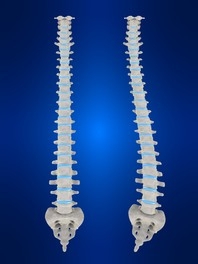

What is Scoliosis?
Scoliosis refers to an abnormal curvature of the spine. The abnormal curvature may have a “C” or “S” shape when looking at the spine and can be progressive or stable. The curve can change and become more pronounced over time or it may remain relatively unchanged. Scoliosis can be graded from a mild to severe curvature. Mild curvature may not be noticeable by the eyes, but may show up on x-ray. Many people are unaware that they have a mild scoliosis as they may have no symptoms associated with it. Mild scoliosis is common and often not painful while severe scoliosis can be seen, affects posture and may be painful.
Common Causes
Scoliosis can begin at birth, referred to as congenital scoliosis (type seen in children), or can develop later in life for unknown reasons, referred to as idiopathic scoliosis (develops in middle to old age).
Diagnosis/Examination
History and physical exam by a qualified musculoskeletal expert is the first step. An x-ray will show how mild or severe the curve is. Mild curves that have no symptoms may be found on x-ray and are considered incidental findings and do not require treatment.
Treatment
If the scoliosis is mild no treatment may be recommended. If the scoliosis is more moderate and painful, physical therapy may be recommended to improve the flexibility and strength of the spine. Bracing may also be prescribed depending on the severity of the curve and whether or not it is progressive (getting worse over time). If the curve is severe and progressive, surgery may be recommended and typically involves fusing the spine.

Copyright © www.orthopaedics.win Bone Health All Rights Reserved